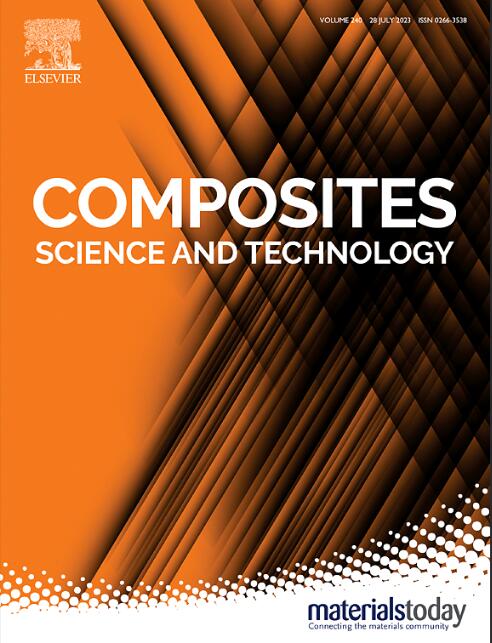Vanillin-based imine curing agent for high-strength, recyclable, aging-resistant, and anticorrosive epoxy composite coatings
IF 9.8
1区 材料科学
Q1 MATERIALS SCIENCE, COMPOSITES
引用次数: 0
Abstract
Epoxy coatings are widely and promisingly used as anticorrosive coatings matrix for marine equipment and engineering protection because of their excellent strength and anti-corrosive performance. However, the intrinsic characteristic of traditional epoxy thermosets causes the resulting coating with unrecyclability, inadequate outdoor aging resistance and poor reprocessable performance. To address the limitations of traditional epoxy coatings, this research used polyether amine D230 and bio-based vanillin to create an amine curing agent (VAN-D230) containing imine bonds. This curing agent was subsequently combined with modified graphene oxide and epoxy resin to produce the composite coatings, which achieved tensile strength, bending strength, storage modulus at room temperature, and a glass transition temperature of 63.43 MPa, 114.97 MPa, 3799 MPa, and 96.2 °C, respectively. Furthermore, the composite material exhibited excellent stress relaxation properties, allowing physical restoration at 190 °C and 20 MPa, with a recovery rate exceeding 89 %. The cured samples also demonstrated outstanding aging resistance for 40 days and anti-corrosion behavior lasting 100 days. Taken together, this work offers a promising procedure to develop a sustainable vanillin-based imine curing agent for epoxy coatings with excellent mechanical strength, recyclability, aging resistance, reprocessability and anti-corrosion.

香草基亚胺固化剂,用于高强度、可回收、耐老化、防腐的环氧复合涂料
环氧涂料以其优异的强度和耐腐蚀性能,在船舶设备和工程防护中作为防腐涂料基体得到了广泛的应用。然而,传统环氧热固性涂料的固有特性导致其具有不可回收性、室外抗老化性不足、再加工性能差的特点。为了解决传统环氧涂料的局限性,本研究使用聚醚胺D230和生物基香兰素制备了一种含有亚胺键的胺固化剂(VAN-D230)。该固化剂随后与改性氧化石墨烯和环氧树脂结合制备复合涂层,其室温拉伸强度、抗弯强度、存储模量和玻璃化转变温度分别为63.43 MPa、114.97 MPa、3799 MPa和96.2℃。此外,复合材料表现出优异的应力松弛性能,可在190℃和20 MPa下进行物理恢复,恢复率超过89%。固化后的样品具有40天的耐老化性能和100天的耐腐蚀性能。综上所述,本研究为开发一种具有优异机械强度、可回收性、耐老化性、可再加工性和耐腐蚀性的可持续环氧涂料用香草基亚胺固化剂提供了一种有前景的方法。
本文章由计算机程序翻译,如有差异,请以英文原文为准。
求助全文
约1分钟内获得全文
求助全文
来源期刊

Composites Science and Technology
工程技术-材料科学:复合
CiteScore
16.20
自引率
9.90%
发文量
611
审稿时长
33 days
期刊介绍:
Composites Science and Technology publishes refereed original articles on the fundamental and applied science of engineering composites. The focus of this journal is on polymeric matrix composites with reinforcements/fillers ranging from nano- to macro-scale. CSTE encourages manuscripts reporting unique, innovative contributions to the physics, chemistry, materials science and applied mechanics aspects of advanced composites.
Besides traditional fiber reinforced composites, novel composites with significant potential for engineering applications are encouraged.
 求助内容:
求助内容: 应助结果提醒方式:
应助结果提醒方式:


